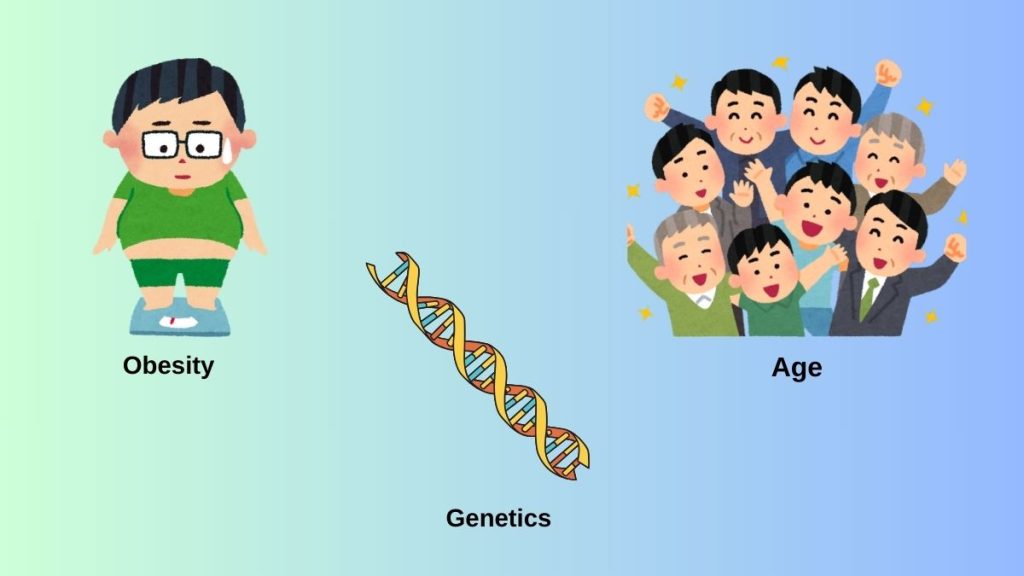Obstructive Sleep Apnea (OSA) is a common sleep problem where your breathing stops briefly because something blocks your airway. This can mess up your sleep and cause serious health issues if not treated. OSA leads to symptoms like snoring, feeling tired during the day, headaches when you wake up, and trouble breathing normally while asleep.
Unlike adults with OSA, who are often overweight, young children with OSA are usually not overweight, making children with OSA harder to recognize and diagnose.
Take this quick assessment to learn the signs of childhood OSA and to help you determine if your child may have obstructive sleep apnea.
Different Causes Of OSA
One of the primary causes of obstructive sleep apnea (OSA) is an upper airway blockage. During sleep, muscles in the throat relax, allowing tissues to collapse and obstruct the airway. This blockage results in pauses in breathing, known as apneas, or shallow breathing, termed hypopneas.
Several risk factors contribute to the development of OSA:

Health Consequences of Untreated OSA
Untreated OSA can have serious health implications, including:
A. Cardiovascular Issues
OSA is associated with high blood pressure, heart disease, heart attacks, and stroke. The repeated disruptions in breathing during sleep lead to drops in blood oxygen levels, placing strain on the cardiovascular system and increasing the risk of these conditions.
B. Cognitive Impairment
OSA disrupts normal sleep patterns, resulting in daytime sleepiness and poor concentration. Prolonged sleep deprivation can impair memory, decision-making, and overall cognitive function, negatively impacting daily activities and quality of life.
C. Daytime Sleepiness and Accidents
Excessive daytime sleepiness is a common symptom of untreated OSA. This persistent fatigue can significantly increase the risk of accidents, both at work and while driving, due to impaired alertness and delayed reaction times. Recognizing and addressing OSA is crucial for improving overall health and reducing the risk of associated complications.
Obstructive Sleep Apnea (OSA) Treatment Options
| Treatment Option | Description |
|---|---|
| CPAP Therapy | Involves wearing a mask over the nose or both nose and mouth during sleep. The CPAP machine delivers a continuous flow of air at a prescribed pressure, keeping the airway open and preventing episodes of apnea and hypopnea. |
| Oral Appliances | Custom-made mouthpieces (MADs) hold the lower jaw slightly forward during sleep, preventing the collapse of the tongue and soft tissues at the back of the throat. Beneficial for mild to moderate OSA or individuals who cannot tolerate CPAP therapy. |
| Surgery | Surgical procedures are aimed at addressing specific structural issues in the upper airway, such as enlarged tonsils or excess tissue blocking the airway. Reserved for severe cases of OSA or when other treatments have failed. |
Lifestyle Changes To Manage OSA
- Shedding excess weight can reduce the severity of OSA symptoms. Even a modest weight loss can lead to improvements in sleep quality and breathing patterns.
- Alcohol and sedatives relax the muscles in the throat, increasing the risk of airway obstruction during sleep. Avoiding these substances before bedtime can help minimize the occurrence of breathing interruptions.
- Sleeping on the back can worsen OSA symptoms by causing the tongue and soft tissues to collapse into the airway. Sleeping on the side may help keep the airway open and reduce the frequency of breathing pauses.
- Using pillows or specialized devices to encourage side sleeping can be beneficial for individuals with OSA.
Related Assessments
